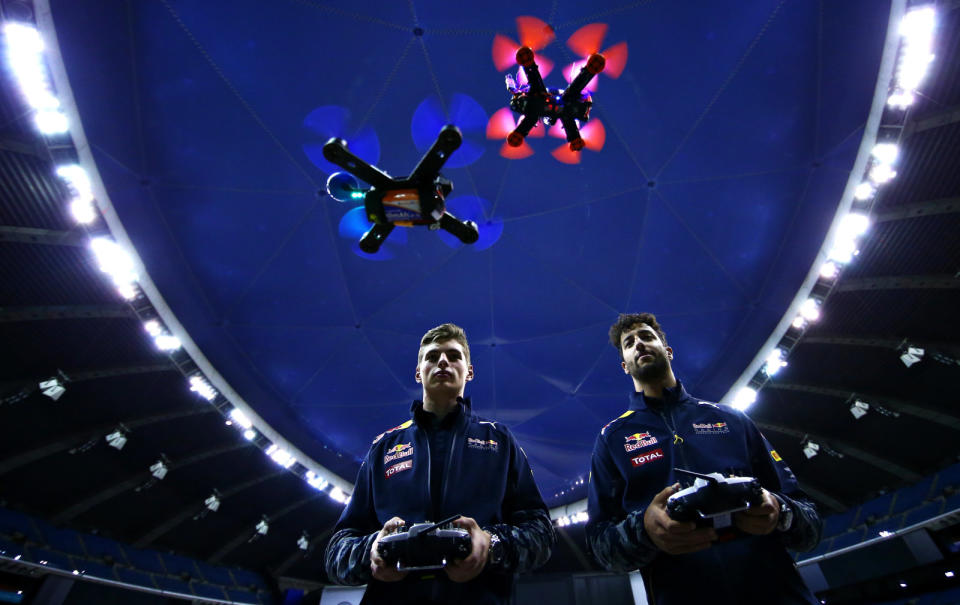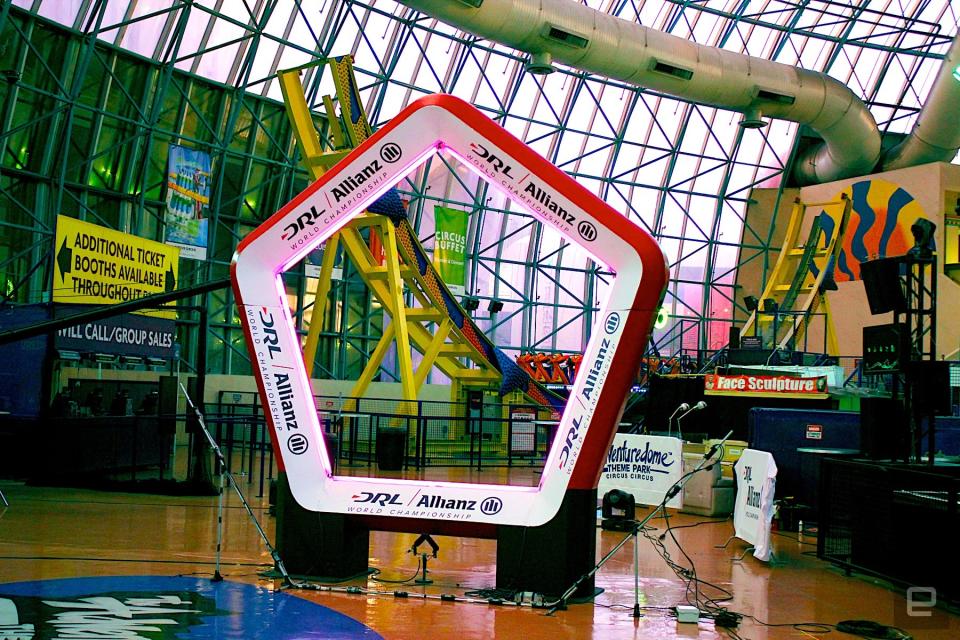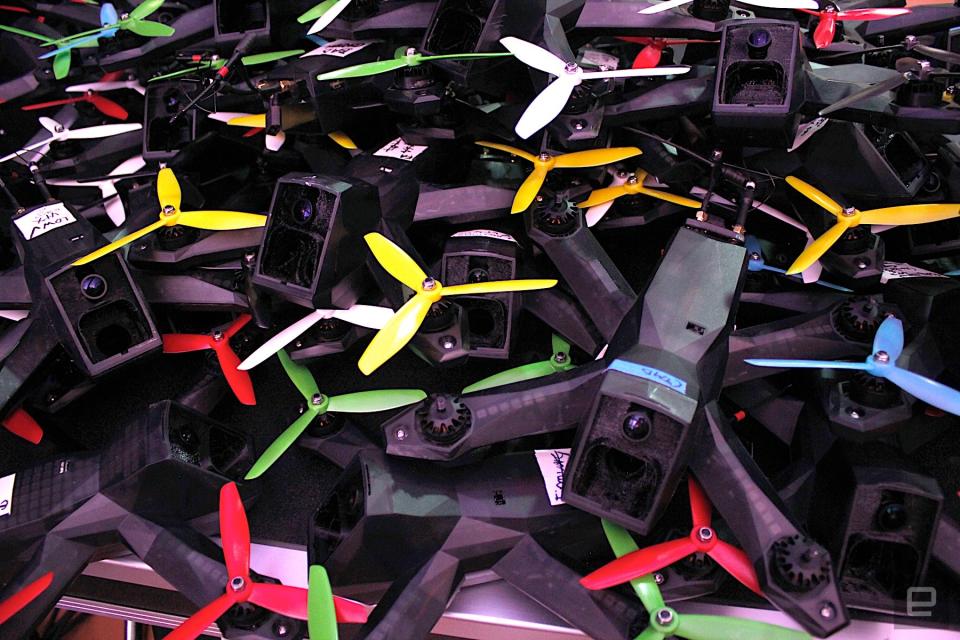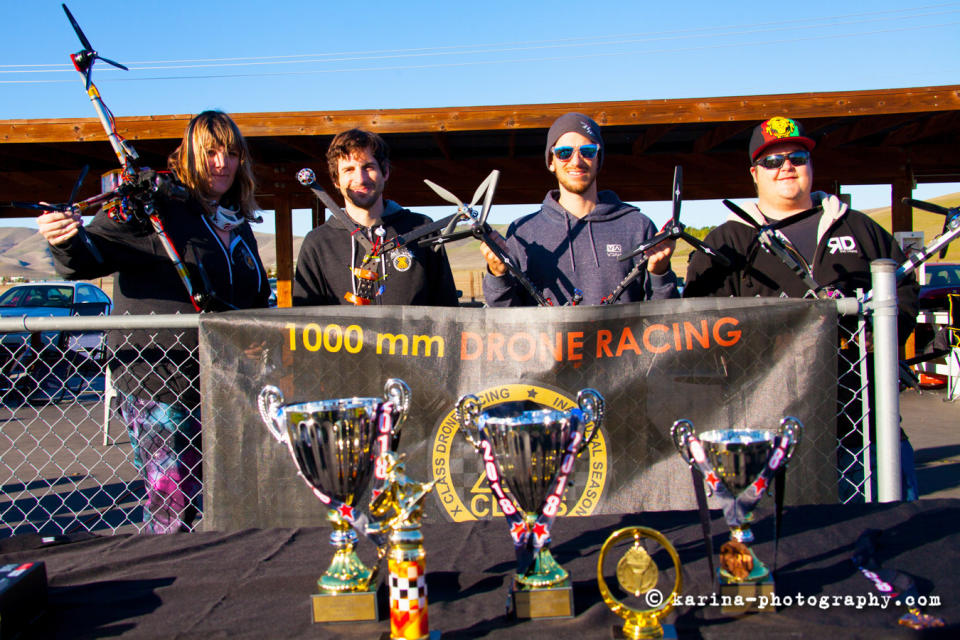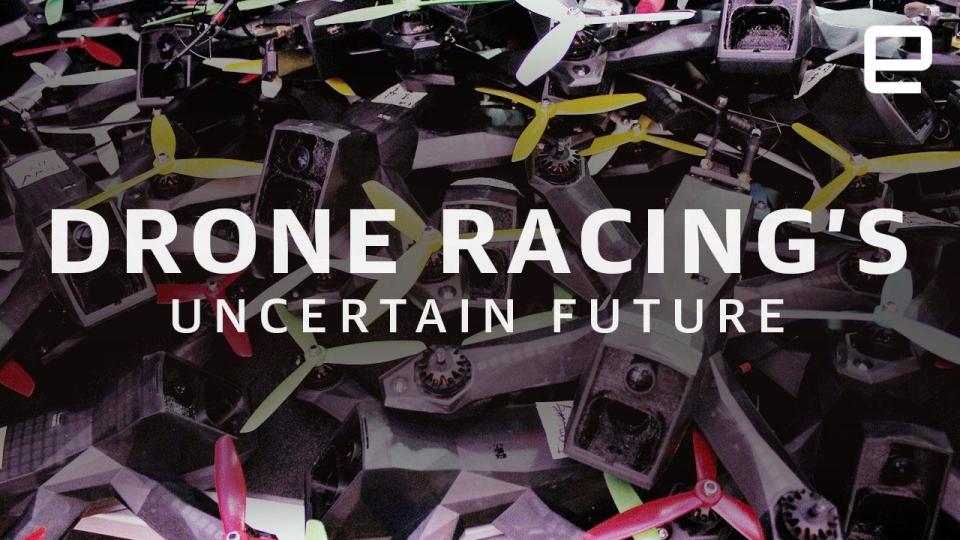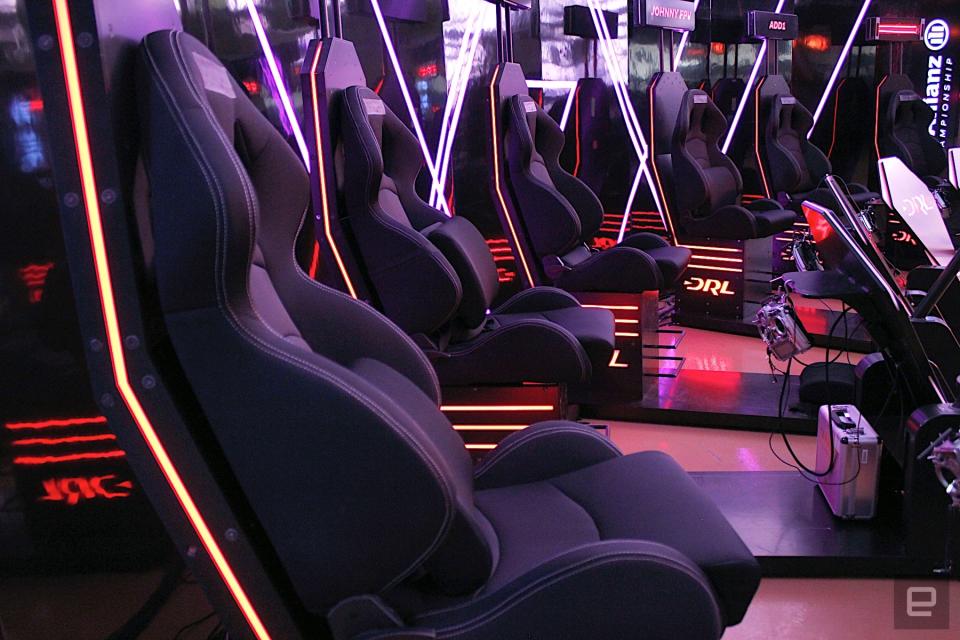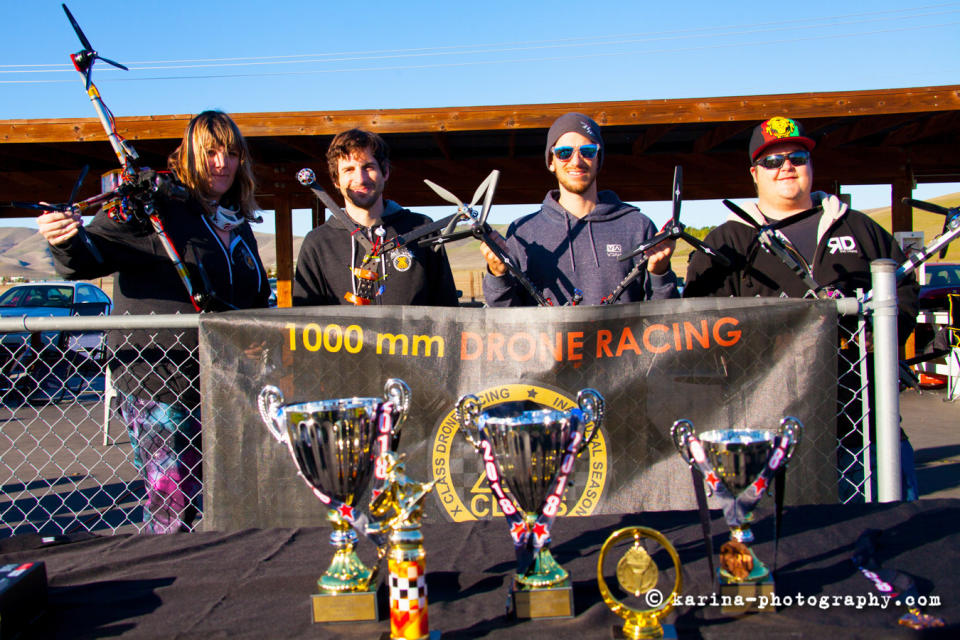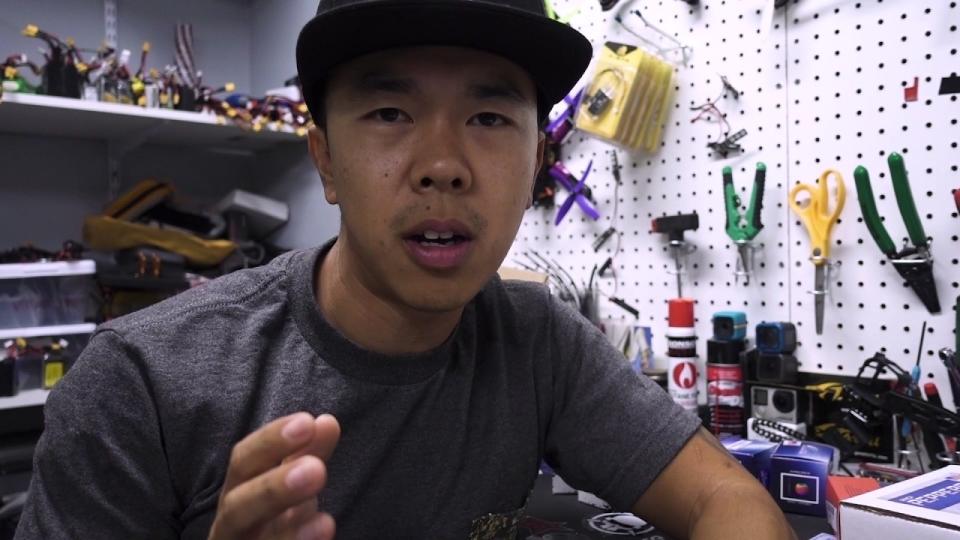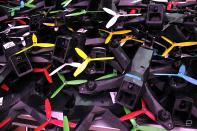Pro drone racing confronts its amateur roots
Can the fledgling sport overcome its "flying toy" image?
"The drone racing league is a sport. We are a league. We do an annual season. We have a clear rule system and scoring system," Nick Horbaczewski, founder and CEO of the Drone Racing League (DRL), enthuses in a small business suite located on the second floor of the Circus Circus Casino in Las Vegas. With a deal with ESPN in the bag, his league is poised to bring the sport mainstream, and within moments of our introduction, he's let me know he's serious. Horbaczewski has delivered this pitch before; his whole business depends on it. Right now, drone racing is punching its way onto our TV screens. Not necessarily because viewers demand it, but because Horbaczewski and his rivals believe in it and have sold their vision to financial backers and media executives. The DRL's investors include the company behind the F1 and the WWE, a fact that becomes more apparent once you compare DRL's pilot page with the WWE's current lineup. Men in moody lighting with menacing looks peer back at you, with names like Wild Willy and Jawz. And that's just the drone pilots. I'm at Circus Circus because the DRL is hosting one of this season's races in the Casino's on-site Adventuredome theme park. I want to see how far the sport has come since leagues like DRL and DR1 started taking things mainstream. Tonight, pilots will fly in, over and around the synthetic mountains and Canyon Blaster roller coaster. As an amusement park, it's fading, but DRL's neon racing gates and branded adornments have given it a modern, if temporary, facelift. Ask anyone involved in drone racing about the sport, and you'll hear some version of "it's come a long way." Most of the bigger leagues (DRL, DR1 and MultiGP) only sprang into existence a few years ago. Before that, drone flying was languishing in its "Z-boys" era. Pockets of enthusiasts around the globe created the technology (mostly by hand and through experimentation) and pioneered new moves and flying styles. In 2018, drone racing faces a new issue: It's growing in popularity but isn't yet a viable career. Right now, the grassroots scene is as thriving as ever, but the number of pilots making a living out of flying remains pitifully small. "In our inaugural season, I would probably guess that not a single pilot who competed in the league made their living as a drone racer," Horbaczewski told Engadget. "At the end of that season we gave out the first championship contract, which went to Jet, and he earned a six-figure salary to compete in the league next year." That's the DRL's champion. If you're placing lower down the table, you're likely running a second job or hustling side gigs. Chris Thomas, the CEO of rival league MultiGP, paints a similar picture. MultiGP's grassroots events take a different approach to DRL's high-budget, made-for-tv races. If Horbaczewski's hand-picked gaggle of pilots are the quadcopter equivalent of the WWE, then Thomas' crowd is made of backyard wrestlers. MultiGP at its most basic helps pilots organize their own amateur races, supplying flags and software for free. Those small local races feed upward into bigger events (the championship races offer prize purses, but at a smaller scale). Anyone can start a MultiGP "chapter", and importantly, anyone can compete. "To be a racing drone pilot and make a living is extremely difficult. I'd say that in the world of drone racing there's maybe 20 pure pilots who make a living just flying." Thomas told me. Twenty is not a lot of people. You can be the 500th-best-paid esports player in the world and still make "six figures" like Jet. If there's not enough money from sponsors or TV deals to go around, then engaging new pilots and viewers will be hard. The trouble seems to be deciphering if there really is an audience, and therefore the eyeballs, needed for the networks and investors that can push the sport mainstream to take note. Unsurprisingly, all three leagues I spoke to had an optimistic outlook. "You're really seeing a global surge in the fan base at the user level and also at the viewer level of folks watching racing on TV," Sahand Barati, VP of business development at the DR1 league, told me. "If drone racing were a fluke, you would see a drop at some point within the viewership, but if you were to look at our ratings, [...] our ratings only went up as each episode aired." Similarly, Horbaczewski is bullish about the sport's appeal. "In the last 12 months, we've had over 55 million people watch DRL on television. So that's really just an explosive growth from really the very beginning." Thomas is a little more pragmatic. "DRL, in my opinion, is the absolute best example of taking drone racing to the masses. [...] I talk to people often who say, 'Oh yeah, I've seen that on ESPN.' Great, how much of it did you watch? 'Oh, I watched like five or six minutes of it and then I went on'" he told Engadget. "It's not because they're not interested, they are, but they can't relate." It's hard not to infer from these comments, that drone flying might just be a lot more fun to do than it is to watch. We all can understand "conventional" sports like football or tennis. Racing, of any kind, is usually easy to understand too, but as I found out at the Adventuredome, even with ringside seats, drones are hard to watch. Trying to follow six dinner plate–sized drones traveling at 80 miles an hour around a 3D course is... it's not Nascar, let's put it that way. The moves might be impressive, but with no one in an actual "driver's seat," the element of danger is lost. No one is more aware of these challenges than the pilots themselves. Zoe Stumbaugh is a well-known, outspoken pilot, who is no slouch "on the sticks." "I won the first AMA-sanctioned (Academy of Model Aeronautics National Model Aviation Museum) drone race in America. My machine is in the museum. The only machine in that museum right now for FPV (First Person View) racing," she said. Stumbaugh often speaks her mind to the media, cutting through the hyperbole like a knife. On the DRL, she told me, "If they honestly picked up the best drone racers in the United States, then their current champion would have a hard time competing." Don't let her candor fool you; Stumbaugh loves drone racing and has chosen to make a living out of it, come what may. Instead of hoping for larger prize purses to appear, she teaches drone skills at Cabrillo College, takes aerial videography work and is a sponsored pilot for Airvūz (a drone video-sharing platform). Stumbaugh thinks that exposure is one thing but engagement is another. "Most people now know drone racing through DRL, but what they know of drone racing is, 'Oh, is that a racing drone? I think I watched that for a few minutes on ESPN once.' People are tuning in, but they're tuning out," she told Engadget. The question, then, seems to be: How do you make drone flying go mainstream? This is where everyone seems to differ. For Stumbaugh, it's about making things bigger. She points to a league of drone racing known as "X Class" that is gaining traction. These meter-wide craft make more noise, are easier to watch and, Stumbaugh hopes, make racing easier to watch for casual viewers. Current DRL champion Jet thinks it's about the long game. "You went to baseball games when you were a kid, and that's why you like the Mariners -- I'm from Seattle. Otherwise, you wouldn't really be a fan of baseball. So it's the same thing here" he told me. "I think it's the income, the mass acceptance, and then it's the fan base." Last summer, I went to Flite Fest West, a modest event in Vallejo, California. Families sat in fold-out chairs watching have-a-go pilots jostle for airtime next to more seasoned fliers under the unyielding Californian sunshine. Old friends shared tips and gossip from the day's activities. Even if you don't like drones, it was a fun way to spend a lazy weekend. During one of the races, a pilot lost his drone. The course was grassy -- perfect camouflage for an eight-inch quadcopter. But everything stopped, and everyone helped the pilot find his quad. For a good 20 minutes, people paced the field like volunteers looking for traces of a missing hiker. This was 20 minutes of dead time: no racing, no beverage sipping, no chin-wagging, but no one complained. This benevolence is what draws a lot of people to the activity. And herein lies the bigger problem with the bigger leagues: Helping out your fellow pilot becomes the difference between you and a paycheck. Tommy "ummagawd" Tibajia, one of the best-known faces in drone flying, explained to me that this is one of the challenges of going professional. "When you move over to the bigger leagues, DRL, DR1, it's a much different story. It's big teams, big names, a lot of money, high stakes with corporate sponsors, and it's very much the opposite of [community]." Tibajia echoes Stumbaugh, suggesting the leagues are pulling away from the sport's roots. "I don't even know if I can blame them because there's a certain element of what their investors are looking for, and that is the entertainment. They want the eyeballs." He also understands why pilots don't like it. "I can see why some pilots are feeling a little disconnected, [...] they get sold on the idea, the glitz and glamour. That you could be this superstar pilot and when it doesn't deliver, it could be very disappointing." The reality is that even the most dedicated racers are having to finance their own way, with no guarantees, no matter how good they are. Tibajia is one of the few pilots who make a career flying, without needing to win a single race. He and his Rotor Riot crew prefer "freestyle." Essentially the "skateboarding" of the skies, pulling off incredible maneuvers in the real world. Under his "ummagawd" handle, he's built a large social media following that gives him sponsorship appeal and attracts other opportunities. It's a model he thinks other pilots could follow. "There's a handful of people that are able to make a career or a living out of that, by following today's social media models: Build up a following and get people to sponsor what you're doing." When I ask him about what the perfect future of drone racing looks like, I get the nearest thing to something that might gel with those at the grassroots. "It would be a team thing. If you are a viewer you'd be sitting in front of your laptop, computer, smart TV, and you could interact with the race," he said. "You can sit there and be like, okay, I want to click on this pilot and watch this guy's footage. Okay, I want to back out. I just want to see what the overall race is looking like." He stresses the importance of a team. In this version of drone racing, you can switch between cameras to keep up with what's going on or jump into a pilot's drone-camera view for the thrills. He talks about having pilots' vital stats on screen and being able to "thumbs up" good moves or exciting corners. This reminds me of some of the more elaborate technology we've seen in baseball and football, just adapted to the drone world. It might not be practical right now, but it certainly feels on-theme with the sport's internet roots. Stumbaugh has a similar vision. "[It's about] going big. Going true spectator sport. Going away from these little plays and then to something that will really get your heart thumping." While I was at the Adventuredome, the drones were barely ever in sight. If I glanced at one of the TV monitors though, the race felt more alive. The art of TV production definitely makes a difference, but races need to engage people in both live and pre-packaged formats to fully emulate the success of something like esports (and its paying live audience). For the DRL's part, Horbaczewski thinks it's a waiting game. "Sports take time. I don't think when I started DRL in 2015 I had any illusion that in 2018 it would be unanimous and everyone around the world would talk about what happened in the drone racing league the night before." Stumbaugh, on the other hand, isn't so sure. "Well, that's the thing. They're trying to make racing little toys look cool."



Community is key




